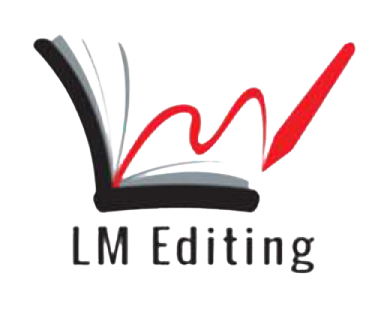Consultation
The first step in engaging Editor services is setting up a free, 30-minute consultation via the Contact page or email. During the consultation, you and the Editor will discuss where you are in the writing process, what your content objectives are, what your vision is for the end product, what your timeframe is, and which publishing method you’ve selected. This helps the Editor develop a proposal for services that are tailored to your specific goals.
Proposal
In order for the Editor to provide a thorough and accurate proposal of services, you will need to provide a writing sample from the intended manuscript, your targeted publication date, and both the current and projected total word count. The Editor will use this information to provide you with a proposal within 3 business days of receiving your writing sample. Once a contract is executed, the process follows the schedule outlined within.
Process Steps
The typical editing process involves the following steps. (Please note that these steps are generalized to provide a basic expectation of the comprehensive editing process of a completed manuscript.)
Editor receives the manuscript - whether in its entirety or by chronological sections - and reviews and revises the content for clarity, uniformity in tone and pace, flow, and content value, making adjustments to grammar, punctuation, and spelling along the way.
Editor returns the revision to the Author(s) with extensive comments and suggested edits, all tracked for reference, and schedules the first review call. Prior to the call, the Author(s) will accept the changes and modify the content based on the Editor’s suggestions, leaving any changes that require discussion in place.
During the first review call - typically an hour long - the Editor and Author(s) will review and agree on a path forward for the outstanding changes. The Author(s) will then accept the remaining changes and make any necessary revisions before returning the manuscript to the Editor for the second revision.
During the second revision, the Editor will review the content to ensure it flows well, has an even tone throughout, is free from spelling, grammatical and punctuation errors, and meets or exceeds the content objectives discussed during the consultation.
The Editor then returns the second revision to the Author(s) with final comments and suggested edits, all tracked for reference, and schedules the second review call. Prior to the call, the Author(s) will accept the changes and modify the content based on the Editor’s suggestions, leaving any changes that require discussion in place.
During the second review call - typically an hour long - the Editor and Author(s) will review and agree on a path forward for the outstanding changes in order to finalize the manuscript for formatting and publication. The Author(s) will then accept the remaining changes and make any final revisions before returning the manuscript to the Editor for its final review.
The final review is performed to ensure all necessary revisions have been made and should result in minimal edits. Upon completion, the Editor and Author(s) will hold a final call to discuss any outstanding items and the next steps before agreeing on the successful completion of the editing process.
